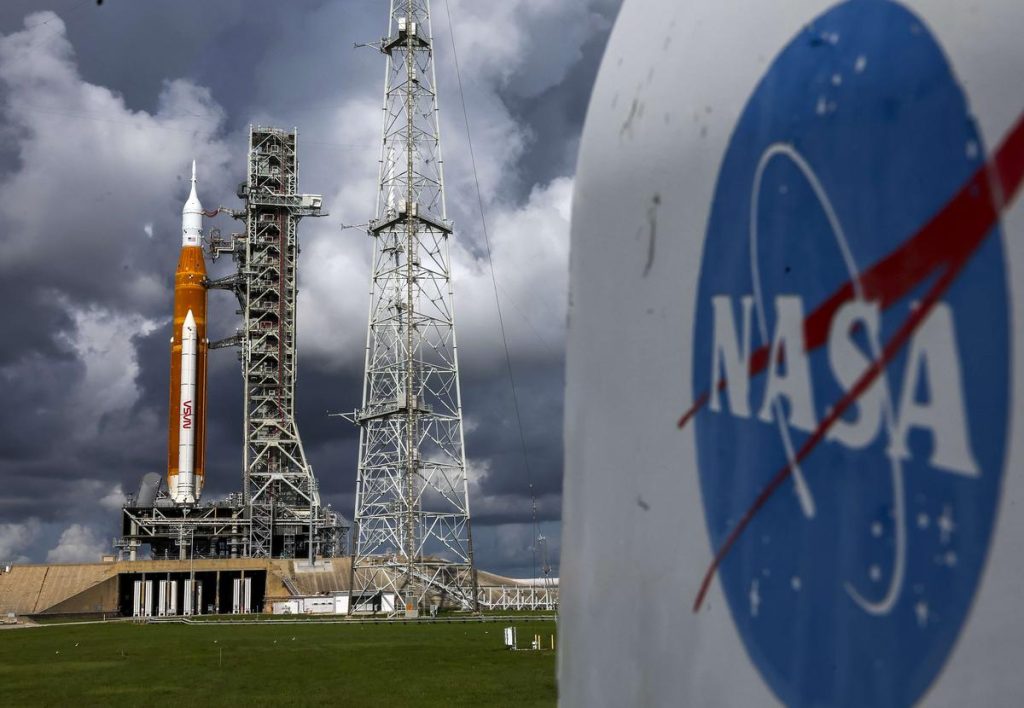
The second attempt to take off on Saturday for the giant NASA rocket to the moon
Takeoff is scheduled for 2:17 pm local time (6:17 pm GMT, 8:17 pm Paris time), and remains possible for the next two hours if necessary.
weather and location
Weather conditions are 60% favorable at the start of this shooting window, then gradually improve to 80%. “Our team is ready, they are better in every attempt,” Jeremy Parsons, director of ground equipment at the Space Center, said Friday. If the weather and physical conditions are met, “we’ll obviously take off.”
In the event of a new obstacle on Saturday, the take-off can be rescheduled for Monday or Tuesday. It will then be necessary to wait until September 19 at the earliest, due to the positions of the Earth and Moon.
The purpose of this unmanned mission, called Artemis 1, is to verify that the Orion capsule, located on top of the rocket, is safe for transporting future astronauts.
Thanks to this new ship, the US space agency intends to reconnect with distant human exploration, as the moon is 1,000 times farther from the International Space Station. Above all, this time NASA intends to establish a permanent human presence there, in order to make it a springboard for a trip to Mars.
Six week trip
In the middle of a long weekend in the US, up to 400,000 people are expected to like take off, especially from the surrounding beaches. The flight was also made by a group of astronauts, including Frenchman Thomas Pesquet.
Filling the rocket’s tanks with refrigerated fuel, about three million liters of liquid hydrogen and oxygen, should begin early in the morning. On Monday, a leak was noted at this point, before the engine cooling issue ended with the launch cancelled. NASA has since worked to solve these problems.
If successful, two minutes after takeoff, the boosters will return to the Atlantic. After eight minutes, the main stage breaks in turn. Then, about an hour and a half later, a final upper-stage thrust will set the capsule on its way to the moon, which will take several days to arrive.
The trip is expected to take a total of six weeks. Orion will venture up to 64,000 kilometers behind the moon, farther than any other habitable spacecraft to date.
The main purpose of the Artemis 1 is to test the capsule’s heat shield, which is the largest of all. Returning to the Earth’s atmosphere, it will have to withstand a speed of 40,000 km / h and a temperature half the temperature of the surface of the Sun. In total, the ship would have to travel about 2.1 million kilometers to land in the Pacific Ocean.
$90 billion
The mission’s full success will be a relief to NASA, which originally credited the first launch in 2017 of the SLS, and by the end of 2025 will have invested more than $90 billion in its new lunar program, according to a public audit.
The name Artemis was chosen after a female character, the twin sister of the Greek god Apollo – echoing the Apollo program, which sent only white men to the lunar surface between 1969 and 1972.
This time, NASA wants to allow the first person of color and the first woman to walk on the moon. As if for the sake of highlighting the icon, it’s Charlie Blackwell-Thompson, NASA’s first female launch director, who will present the final “launch” for takeoff on Saturday.
After this first mission, Artemis 2 will carry astronauts to the Moon in 2024, without landing there. Honor dedicated to the crew of Artemis 3, in 2025 at the earliest. Then NASA wants to launch about one mission each year.
It would then be a matter of building a space station in lunar orbit, a portico, and a lunar base.

“Incurable web evangelist. Hipster-friendly gamer. Award-winning entrepreneur. Falls down a lot.”
